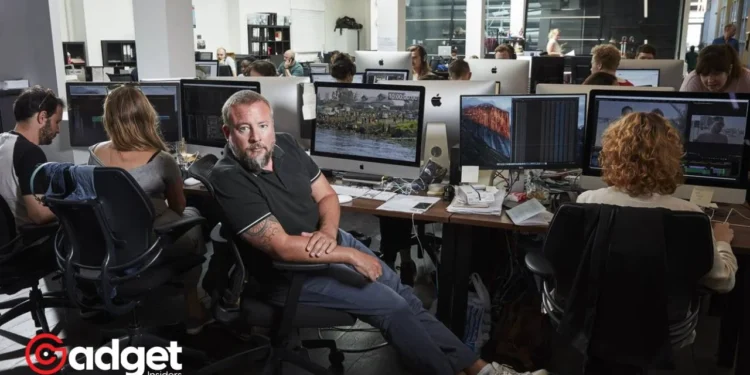In a move that has sent shockwaves through the digital media landscape, Vice Media, once a bastion of cutting-edge journalism and provocative content, has announced a significant operational shift that marks the end of its traditional publishing model. This decision comes on the heels of the company declaring bankruptcy a year prior, underlining the volatile nature of the digital media industry and the challenges it faces in a rapidly evolving marketplace.

A Glimpse into Vice Media’s New Direction
Bruce Dixon, the CEO of Vice Media, has laid out a bold new strategy for the company, signaling a departure from its established methods of content distribution. In a move that has surprised many, Dixon announced the cessation of publication on Vice Media’s flagship website, vice.com, coupled with the decision to lay off hundreds of employees.
This pivot towards a “studio model” signifies a dramatic restructuring aimed at aligning Vice’s operations with the changing dynamics of digital content consumption.
The memo shared by Dixon, which quickly proliferated across social media platforms, elucidates the company’s intention to adapt to the “ever-evolving business landscape” by forging partnerships with established media entities for content distribution. This strategic realignment emphasizes Vice’s commitment to remain competitive and relevant in a market that demands innovation and flexibility.
The head of Vice Media Group has informed employees that the company will stop publishing content on Vice·com and will be cutting "several hundred" positions. https://t.co/q6PqofiwBR .
— CBC News (@CBCNews) February 23, 2024
The Fate of Refinery29 and Vice Media’s Digital Presence
In an era where digital footprints dictate a company’s relevance, Vice Media’s decision to continue its storytelling through social media channels while exploring the sale of Refinery29—a diversified digital publishing business acquired by Vice—underscores a calculated approach to navigating financial tumult and market saturation.
Dixon’s announcement that Refinery29 will operate as a standalone entity, with ongoing discussions for its sale, highlights Vice’s strategic maneuvering to consolidate its resources and focus on areas with the potential for higher returns.
The Implications for Digital Journalism
Vice Media’s radical shift from a traditional digital publisher to a studio model is reflective of broader industry trends, where adaptability and strategic partnerships have become crucial for survival.
The company’s decision to halt publishing on its website and realign its content distribution strategy is a poignant reminder of the challenges faced by digital media outlets in maintaining profitability and relevance amidst changing consumer preferences and technological advancements.

Vice Media: A Look Ahead
As Vice Media embarks on this new chapter, the implications for digital journalism are profound. The transition underscores the necessity for media companies to innovate continually and adapt to the shifting landscapes of content creation, distribution, and monetization.
Vice’s move may well set a precedent for other digital media outlets grappling with similar challenges, signaling a potential industry-wide shift towards more flexible and collaborative content models. Vice Media’s strategic overhaul is not just a response to financial adversity but a testament to the company’s resilience and willingness to redefine its path.
As the digital media landscape continues to evolve, Vice Media’s journey will be closely watched by industry peers and consumers alike, serving as a case study in adaptability, strategic foresight, and the relentless pursuit of relevance in an ever-changing world.










